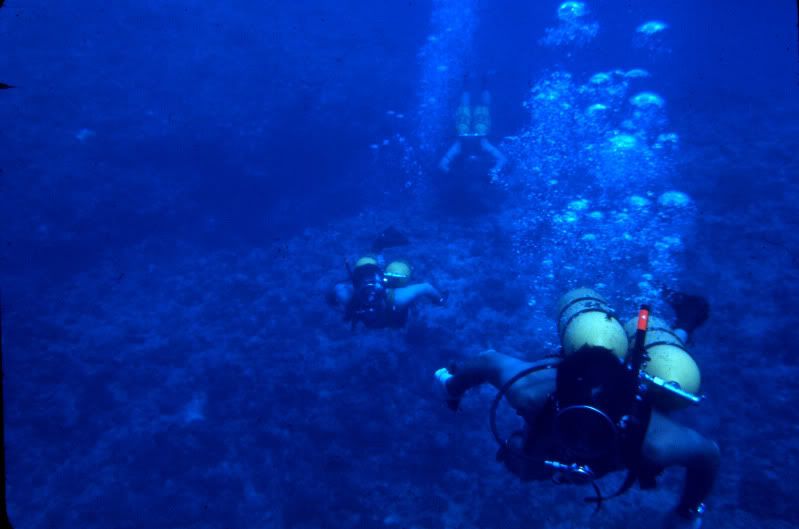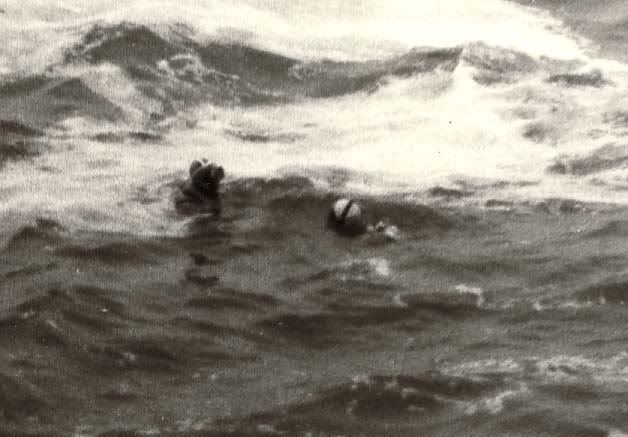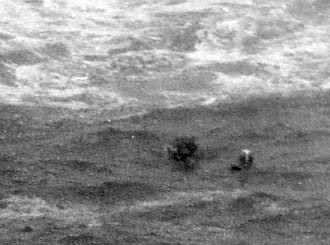funrecdiver,
Many of us are envious. It looked like this when I was diving tropical waters around Okinawa (now the Ryuku Islands, Japan).

A diver can dive neutrally buoyant in cold waters with a wet suit, but that part about not having any air in the BCD would have to be exempted.
In the US Navy, we used "buddy lines." These were a line about 3 feet long which each diver held, to keep in contact. My buddy and I were using a buddy line during an open ocean dive off Otter Crest, Oregon in December, in the 1970s. That was the one thing we did right on that dive. We looked over the ocean, and thought that 3-5 foot breakers were manageable. We watched for about half an hour, then decided to dive. The other thing we did right was to have our girl friends watching us. Here is what we looked like as we were swimming out:

And here is what we looked like about fifteen minutes later when we had been rolled by a huge wave (15-20 feet).

I'm without a mask, my buddy is without his helmet and mask. After waiting for a while for us to come in (we could not exit where we entered because of the surf), our girl friends called the Coast Guard. I still had my white-water kayaker's helmet on, and that is what the Coast Guardsmen saw when they were looking at dusk for us. They were really happy; we were their first live pickup in quite a while. We, obviously, were happy also.
Take-aways:
1. When the worst happens, remain calm and think it through.
2. A four-foot buddy line kept us together even while being rolled by a huge breaker.
3. Be prepared to stay out a while (we were thinking we'd be in the water overnight).
4. Be able to signal for help. We couldn't--the helmet had white stripes on it, and that's what they saw.
5. Let someone know when you are going, where, and when you will be back.
What does this have to do with the present accident? Well, one wonders whether a buddy line would have helped, or whether there would have been two people down at 45 feet.
SeaRat
Many of us are envious. It looked like this when I was diving tropical waters around Okinawa (now the Ryuku Islands, Japan).

A diver can dive neutrally buoyant in cold waters with a wet suit, but that part about not having any air in the BCD would have to be exempted.
In the US Navy, we used "buddy lines." These were a line about 3 feet long which each diver held, to keep in contact. My buddy and I were using a buddy line during an open ocean dive off Otter Crest, Oregon in December, in the 1970s. That was the one thing we did right on that dive. We looked over the ocean, and thought that 3-5 foot breakers were manageable. We watched for about half an hour, then decided to dive. The other thing we did right was to have our girl friends watching us. Here is what we looked like as we were swimming out:

And here is what we looked like about fifteen minutes later when we had been rolled by a huge wave (15-20 feet).

I'm without a mask, my buddy is without his helmet and mask. After waiting for a while for us to come in (we could not exit where we entered because of the surf), our girl friends called the Coast Guard. I still had my white-water kayaker's helmet on, and that is what the Coast Guardsmen saw when they were looking at dusk for us. They were really happy; we were their first live pickup in quite a while. We, obviously, were happy also.
Take-aways:
1. When the worst happens, remain calm and think it through.
2. A four-foot buddy line kept us together even while being rolled by a huge breaker.
3. Be prepared to stay out a while (we were thinking we'd be in the water overnight).
4. Be able to signal for help. We couldn't--the helmet had white stripes on it, and that's what they saw.
5. Let someone know when you are going, where, and when you will be back.
What does this have to do with the present accident? Well, one wonders whether a buddy line would have helped, or whether there would have been two people down at 45 feet.
SeaRat




